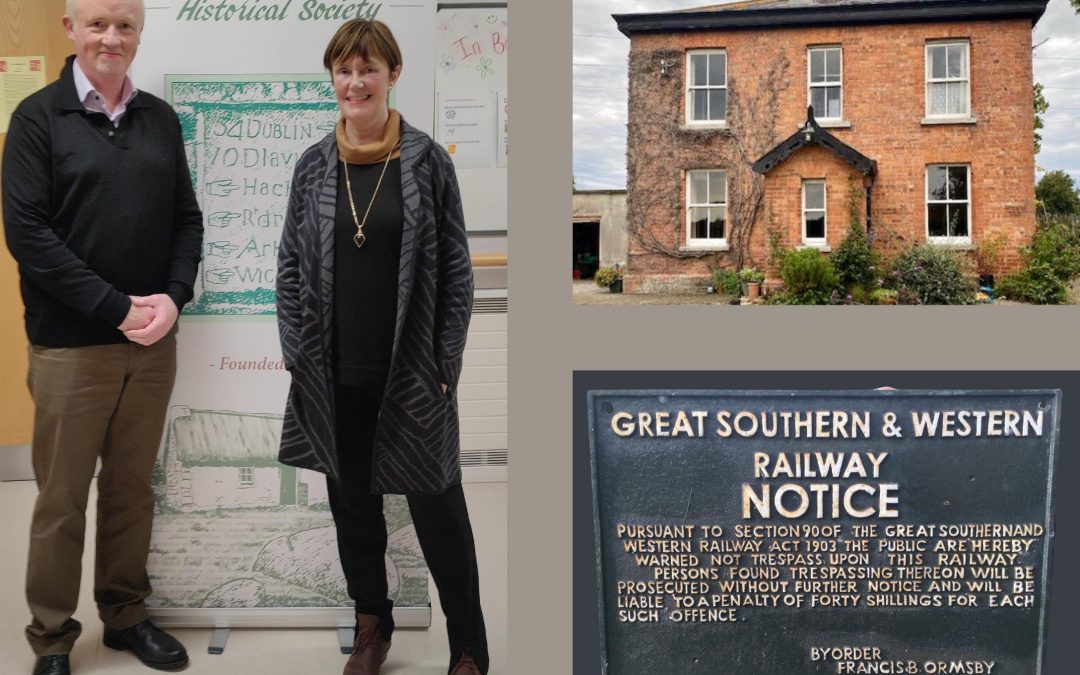On the evening of Tuesday 12 March 2024, WWHS member John O’Brien provided an excellent lecture entitled The Station Masters and Employees of the Sallins-Tullow Railway Line at the Lalor Centre, Baltinglass. Judging by the large attendance there continues to be a lingering nostalgia for and engagement with the history of the Sallins-Tullow line. Indeed, many traces of its existence are still visible in the West Wicklow landscape. The line was constructed during the 1880s to serve parts of north Kildare and the general area of West Wicklow. Trains left Dublin from Kingsbridge (now Hueston) station and branched off at Sallins to service stations at Naas, Harristown, Dunlavin, Colbinstown, Grangecon, Baltinglass, Rathvilly and Tullow.
During the construction phase, 1,200 men worked on preparing the terrain, laying the lines and building forty-five bridges. The nine stations and Station Masters’ houses, together with numerous cottages for staff were built to a very high standard. Jobs on the railway line often ran through generations of the same family. By 1911 the Great Southern & Western Railway ( GSWR) employed approximately eighty staff including nine station masters, four clerks, nine signal men, twenty-six porters, twenty-three way-workers, eleven labourers, coal men and engine drivers. Staff at the stations tended to originate from other counties while the majority of other permanent employees were local people.
In its heyday three to four trains ran daily in both directions. The line was nationalised between 1916 and 1921, becoming part of the Great Southern Railway (CIE from the 1940s onwards). By 1927 passenger numbers were in decline and the passenger service was closed in January 1947; by March 1947 the goods service finally finished. From then until March 1959 the line operated a skeleton crew, running special trains to pilgrimage sites and sporting events such as Punchestown races. After the final closure of the line, CIE pulled up the lines very quickly and sold the land back to the local farmers and sold off the Station Masters’ houses, various railway cottages and other properties.
Many thanks to John, whose presentation and analysis were top-class. After the lecture we enjoyed an equally informative Q&A session.
Photo (clockwise L to R): 1. John O’Brien and Cora Crampton (WWHS Secretary); 2. Harristown Station Master’s House (its design is almost identical to similar buildings in Dunlavin, Colbinstown, Baltinglass, Rathvilly and Tullow); 3. a cast iron GS&WR sign at Harristown. Photos nos. 2 and 3 courtesy of John O’Brien.

